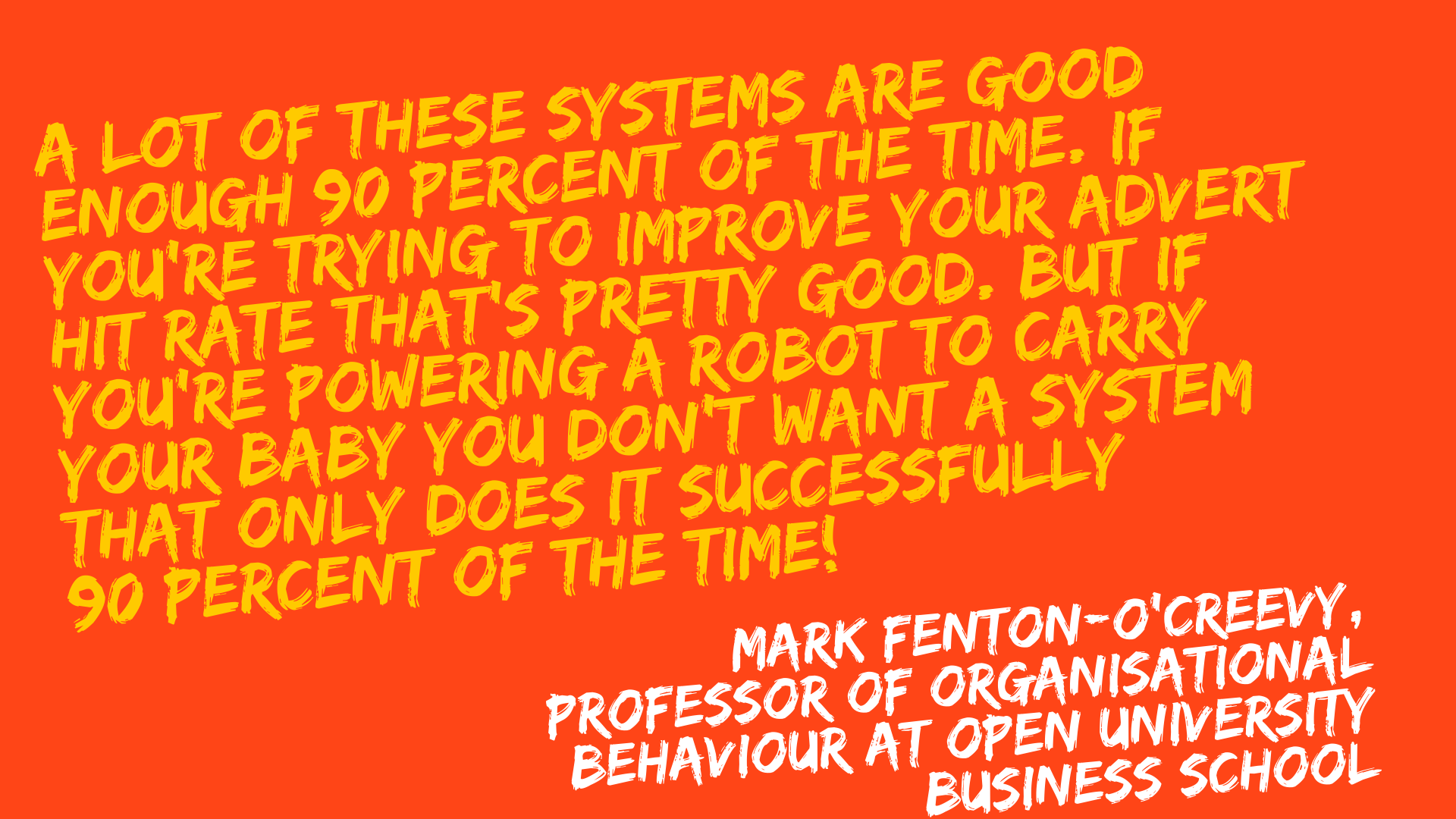Resetting human work in a technology-driven world
Only by empowering workers and creating an environment in which they feel important, productive and creative will leaders ensure humans are at the heart of the organisation in a world in which artificial intelligence and automation continue to expand and grow in capability. Here’s why – and how – HR leaders must do this
.png)
The robots cannot be ignored. According to the World Economic Forum the division of labour between people and machines will continue shifting towards machines, especially for repetitive and routine tasks. Quite how far the ramifications of this trend will be felt is up for debate, but the Organization for Economic Cooperation and Development (OECD) estimates automation could eliminate 14% of today’s jobs and trigger radical change in a further 32%.
Businesses with a large robot workforce such as Amazon and Ocado have benefited from investment in warehouse automation that has allowed them to keep goods flowing smoothly in challenging times. The pandemic has unquestionably led many organisations to explore and implement new technologies as they adapt to changing circumstances. An interesting case in point came in the early days of the pandemic, in January 2020, when the first person diagnosed with COVID-19 in the US was treated by doctors at Providence Regional Medical Center in Everett, Washington using a robot to measure the patient’s vitals and for communication via a large screen.
As the options presented by artificial intelligence (AI) and automation continue to expand and grow in capability, organisations – and indeed society more broadly – will need to think about work in new ways. This calls for a resetting of ‘human’ work that embraces a more empowering future for flesh and blood workers – a future in which people are properly prepared for working alongside machines and value and esteem are placed on accomplishing the things only humans can do, whether that be critical thinking and nuanced problem solving, ethical reasoning, personal interaction and strong communication skills, and service with empathy.
The importance of storytelling
Mark Fenton-O’Creevy, professor of organisational behaviour at the Open University’s Faculty of Business and Law, says he might reasonably be characterised as an AI sceptic. “The big problem with a lot of AI at the moment, and machine learning particularly has this problem, is that the internal models that machine learning systems produce are completely obscure to the humans that have to work with them. Even the people who program them. You actually don’t know on what basis the decision is being made. So it is hard to interact with it.”
This is in stark contrast to the way people go about things, especially in the way we use storytelling as a way to overcome uncertainty. As Fenton-O’Creevy explains, one of our key evolutionary adaptations to a complex, uncertain world is the ability to weave stories which we use as a device for making and sharing meaning. These narratives not only offer the basis for action in the face of uncertainty but act as a tool for persuading others to work with us.
“Without stories and emotions to guide us we have no way to decide what to pay attention to, in a world in which available sensory information always massively exceeds our capacity to process it. In this way stories and emotions are an important tool of rational decision-making.” Organisations and managers must factor in this powerful human process of prioritising the right things to avoid falling prey to ‘computer says no’ errors.

Prepare workers through cross- and upskilling
Recent research by Accenture, which analysed 8,300 large enterprises, found that 80% are making AI a key part of their IT systems and business processes. While this is already yielding positive results in operations, James Wilson, managing director of information technology and business research at Accenture Research, argues that greater potential lies in leveraging the technology to combine human talent and oversight with a nearly limitless capacity of intelligent machines to explore new possibilities.
Wilson, who is also co-author (with Paul R Daugherty) of the bookHuman + Machine: Reimagining Work in the Age of Artificial Intelligence, takes the view that the collaborative relationship between humans and AI will enhance the capabilities and performance of both over time as they continue learning from each other.
“One of the biggest challenges in adopting AI is the lack of necessary skills within the workforce,” says Wilson. “Organisations must prepare their workforce for the changes to come – which can range from new responsibilities within an existing role to entirely new job functions. For example, those in existing non-technical roles will need to upskill to take on roles that require critical thinking and learn to harness AI-assisted technologies for increased efficiency and quality. Meanwhile, workers performing routine tasks will need to cross-skill and prepare for roles that depend on ‘uniquely human’ traits. As these changes are implemented it is important that leaders work with their HR teams to ensure that workers feel empowered, rather than threatened, by future AI developments.”
Develop meaningful work
HR should remain mindful that employees will always have skills that cannot be automated. A good example of this in an HR context is spotting when people are saying things are fine when in fact they aren’t, by picking up on tone and knowing when to go the extra mile to support someone. Empathy, ethical reasoning and interpersonal communication are essential for a business to function.
Rebekah Wallis, director – people & corporate responsibility, Ricoh UK, argues that while technology may help in areas such as online desk booking services, only humans can gauge whether employees feel safe and comfortable hot-desking or even being back at the office. At a strategic level she believes HR will need to change to put a greater focus on developing meaningful work, and that this will require constant upskilling and lifelong learning.
“HR must always adopt a people-first attitude, and the positive impacts and potential strains of new technology on a workforce have to be carefully monitored,” says Wallis. “As HR professionals we will also need to manage change fatigue, wellbeing and resilience, and ensure we communicate effectively and often with staff to bring them on the journey.”
Match skills with the capability of available tools
Gotti Kristjansson, senior director of business support services at global transport and logistics business DSV, has responsibility for the company’s robotic centre of excellence which harnesses technology from intelligent automation specialist Kofax. Like Wallis he feels employees will need to be more focused on upskilling and constant learning, and more aware of where they stand and where they need to go.
“We as employees will turn our way of thinking towards how to match our skills with the capability of the tools available, and how to best use them to work with us in solving problems and predict next steps in improvements,” says Kristjansson. “Although we’ll still need similar skill sets to those we use in our current environment, we’ll shift more into specialist skill sets and mindsets and we’ll focus more on optimisation, preventive actions and possible outcomes rather than current operational tasks, as they’ll likely be executed by non-humans.”
Ask ‘why’?
As machines develop deep learning capabilities the human contribution will become more focused towards asking why. Why are we doing things as they are? Should we change that? It will be more about setting strategies and working out how to reach desired results.
The global pandemic has accelerated changes to IT that were already under way, increasing the need for automation and transformation to the point where digital investments are at an all-time high. Recently released IDC FutureScape: Worldwide Digital Transformation 2022 Predictions research finds that direct digital transformation investment for 2022-24 is expected to hit $6.3 trillion and account for 55% of all ICT investment by the end of 2024. For the first time ever, notes IDC, most enterprise organisations (53%) have an enterprise-wide digital transformation strategy, a 42% increase from just two years ago.
Build a culture in which employees feel empowered
To get the best out of automation, says Nerys Mutlow, evangelist in the chief innovation office at ServiceNow, HR leaders will need to build a culture that moves away from simply helping employees, to ensuring staff are empowered and can help themselves. “HR needs to create an environment where workers feel important, productive and creative. One way to do this is to reduce manual processes and give staff the opportunity to expand their capabilities. Another way is to demonstrate how individual work contributes to a company’s vision and success. This will help employees feel more engaged and empowered.”
Yet despite the growing capabilities of AI, it does not always work as well as its suppliers would hope. There are critical questions to consider around what constitutes ‘good enough’ performance – and the acceptability of the answer will depend on the nature of the proposed tasks.
As Fenton-O’Creevy wryly observes: “A lot of these systems are good enough 90% of the time. If what you’re doing is trying to make decisions about improving the hit rate of your adverts, that’s pretty good. But if you are powering a robot to carry your baby to bed, you don’t want a system that does it successfully 90% of the time.”
Such limitations are one of the reasons why Wallis expects to see a move to a workforce where machines “augment and support human skills” as opposed to replacing them. The ideal is for machines to help human work become smoother and more efficient. “This kind of technology can be used effectively to flag problems in businesses and workplaces before they occur. Although fixing the problem requires ‘human’ work, noticing it earlier and scheduling a convenient time to fix it gives employees the time to do so and makes the entire process far more efficient.”
While it’s most certainly not a case of the robots taking over, the ongoing rise of AI will lead to a resetting of human work to some degree over the next few years. There’s plenty for HR leaders to ponder…in a way that only humans can.
